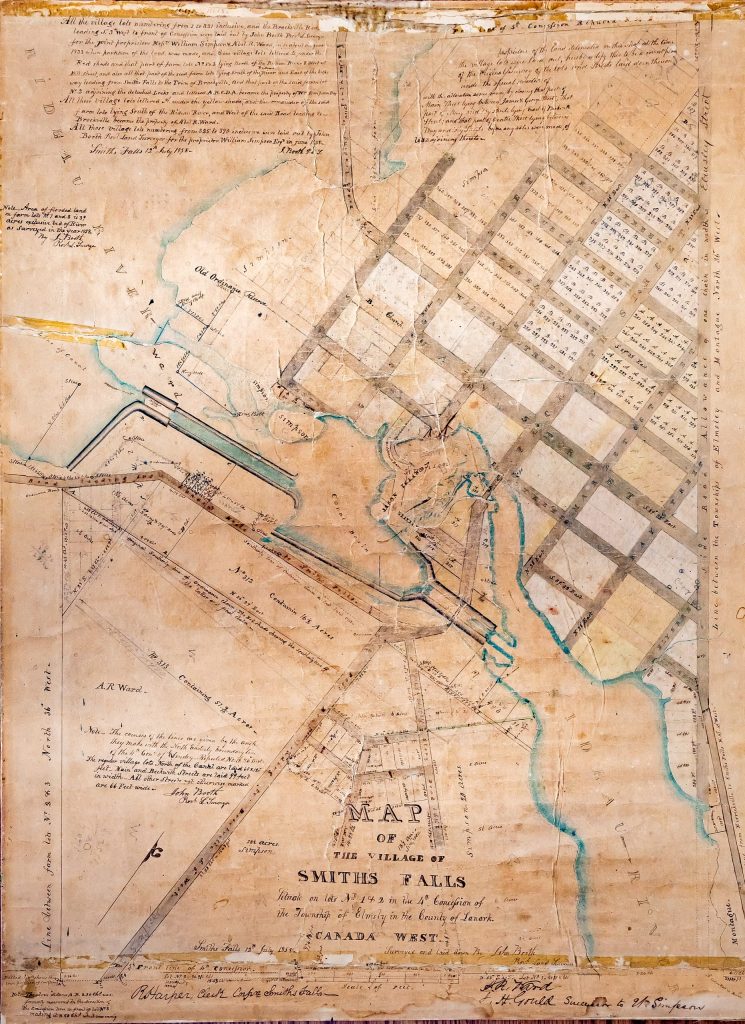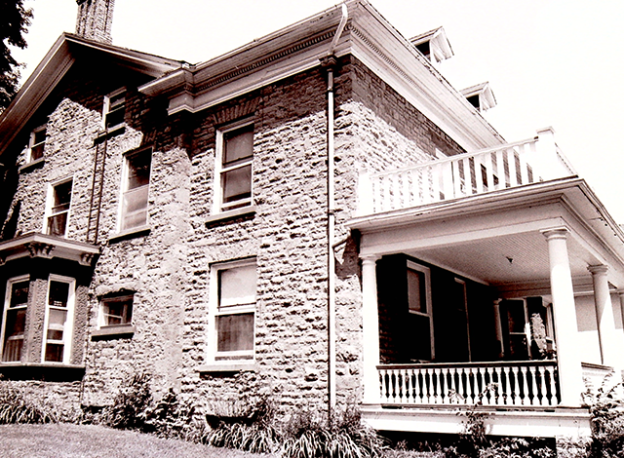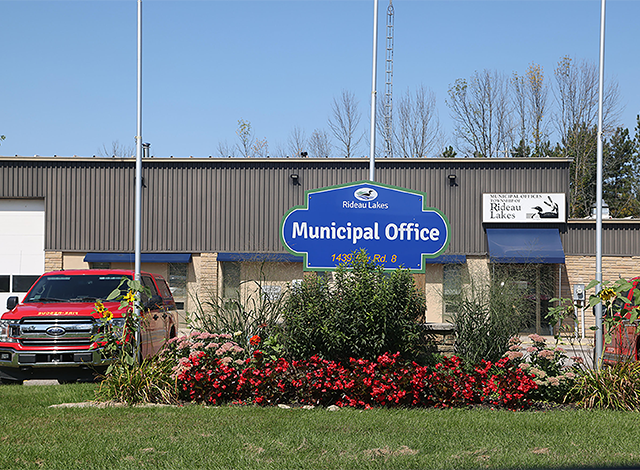In 1825, 400 acres of Smiths Falls land was auctioned off for £105 by a sheriff. Major Thomas Smyth defaulted on his mortgage, and Charles Jones took advantage of a great deal. Within two years, Jones was able to flip lots 1 and 2, Concession Four, Elmsley Township, and pocket a substantial profit. James Simpson and Truman Hicock paid £600 for the uncultivated townsite, which boasted waterpower on the Rideau Canal. By 1831, one-third of the site of Smiths Falls belonged to Abel Russell Ward, and two-thirds belonged to James Simpson.
Abel Russell Ward was a United Empire Loyalist and Maitland lumberman who came to Smiths Falls in 1826. James Simpson was one of the first contractors to work on the canal. He was from Londonderry, Ireland, and had experience working on the Erie Canal in Lockport, New York. A team of Irish immigrant labourers accompanied him. Simpson described his experience as follows:
“When I came to Smyths Falls or Wardsville in 1827, the place had no roads leading to it. It was an entire wilderness with the exception of an old sawmill newly rigged up by Abel Russell Ward for the purpose of sawing lumber to build with, and Ward’s own dwelling, a log house nearby. The sawmill had hardly commenced operations, when by order of Colonel By, the Officer in charge of the entire works, I removed it, to make way for the canal. I came on with about twenty men and with teams, we opened a road from Smyths Falls to the By-town road, a distance of about eight miles, also roads towards Perth, about nine miles, improved a road to Merrickville, three miles, also a road to Dack’s Tavern on the post road to Brockville, and a road of five miles from Smyths Falls to the Rose Settlement. In my opinion, the opening up of these roads all leading to this quarter and the improvements made by myself, Abel Russell Ward and others who settled in, tended more than all other things to make Smyths Falls what it is today.”

In 1827, Lieutenant Colonel John By, Superintending Engineer of the British Army’s Ordnance Department, entered into a contract with Rykert, Simpson & Company for work to be performed on the canal. It was not a healthy working relationship. Colonel By was not impressed with their construction techniques and Lieutenant Pooley complained of general incompetence. Meanwhile, Simpson had his workers build several mills for him on land on Jason Island, which he did not own. The land belonged to the Crown, and Simpson had no legal right to it. In January 1831, with a £2,000 advance in hand from the Ordnance Department, Simpson abandoned his contract and used the funds to develop his mills and increase his ownership of Smiths Falls land. The Ordnance Department responded by hiring Richardson, Griffith & Company to complete the work on the canal. Then, they attempted to reaffirm ownership of the land where Simpson’s mills were located. This did not go as planned. Simpson had an incredible influence over the French Canadian and Irish immigrant workmen and could arrange for angry mobs when necessary. When Pooley installed pickets marking the land owned by the Ordnance Department, Simpson simply tore them out and tossed them into the canal. Simpson is said to have used “the most abusive language to the servants of the Government on all occasions.”
Ordnance officials launched a lawsuit against Simpson. They knew that if it was successful, Simpson would be unable to produce £2,000, as he had already spent it on his property acquisition. As a result, Simpson would be forced to sell his property. However, if Simpson defaulted, Ward would become responsible for the debt, as he had guaranteed the canal contract in 1827. James Simpson and Abel Russell Ward used some epic legal prestidigitation to extract themselves from their dilemma. The Upper Canada Jurist tells us that in 1831 they sold their interest in the 400 acres of land to James’s brother William Simpson for £5,000. After that, James simply vanished.
In 1832, the Rideau Canal opened and the Ordnance lawsuit was dropped. William Simpson resold Abel Russell Ward’s share of land back to him for £2,000. Simpson and Ward agreed on a division of their property and drew up a plan of the village. They began to sell lots even before it was officially surveyed by John Booth in 1833. During this time, Ward tried unsuccessfully to rename the town Wardsville. Rumours circulated that James either began a bootlegging career in Smiths Falls, or found employment as a canal contractor in the United States. James eventually materialized in California to participate in the gold rush. In 1849, he died of cholera aboard the ship Independence while in Panama. William Simpson became the single largest landowner of one of the most promising townsites in eastern Upper Canada.
William Simpson and Abel Russell Ward built themselves magnificent homes which still stand today. In the mid-1830s, Ward had a Neoclassical Adam style house built at 57 Water Street, later known as Chambers Street. At the time, it was the largest and most elegant home in Smiths Falls and was most appropriate for a major landowner and millowner. William Simpson had a more conservative—but no less spectacular—villa constructed circa 1840, with lovely twin verandahs, Tuscan windows, and a massive curving stone wall wrapping around the corner of Brockville Street and Jasper Avenue.
Ted & Marion Outerbridge are currently restoring a Smiths Falls heritage home built in 1893. They are also being swept away by local history & mystery. You can follow them at on Instagram, Facebook, and TikTok @thekeyholehouse or email ted@tedouterbridge.com.















